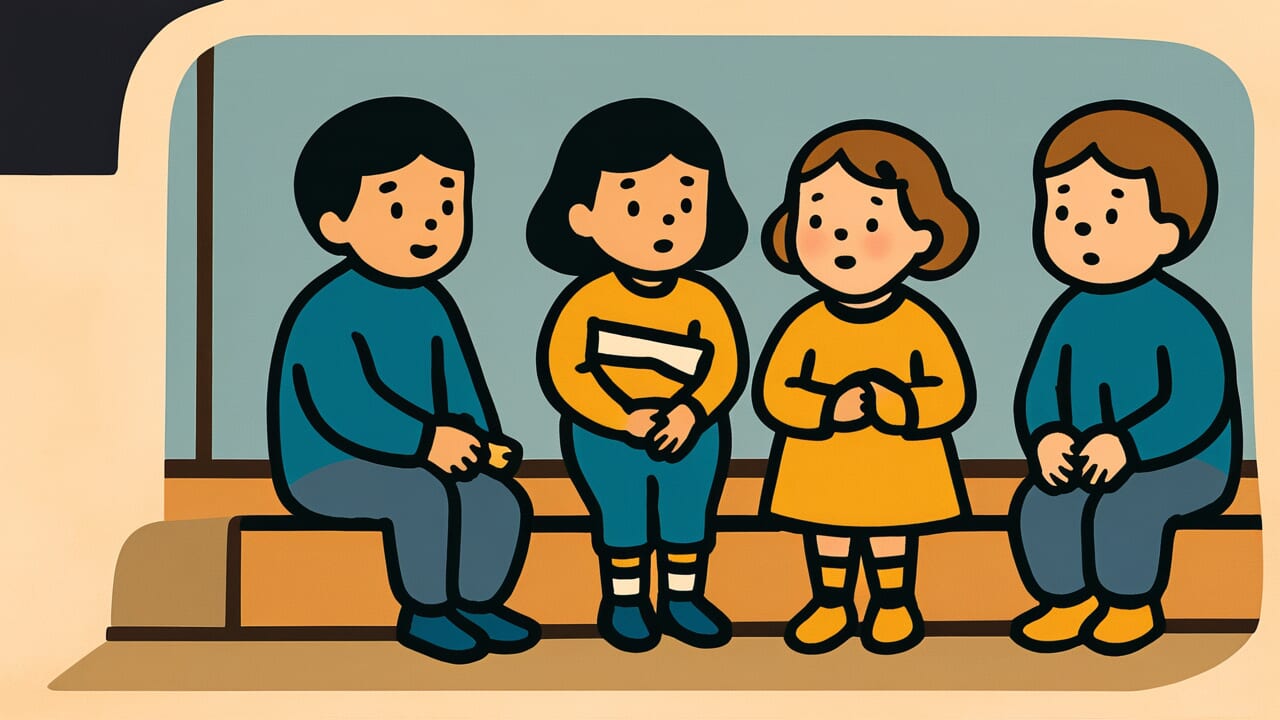How to Read “Not too little, not too much: three children”
tarazu amarazu ko sannin
Meaning of “Not too little, not too much: three children”
This proverb means that three children is the most appropriate number for both household finances and family structure.
It represents the wisdom of ancestors who believed three was the ideal balance between economic burden and family fulfillment.
With only one child, there are concerns about having an heir. With two children, sibling relationships tend to be monotonous.
But with three children, the family line continues even if something unexpected happens. The children also develop diverse relationships among themselves.
At the same time, having four or more children increases the burden of education and living expenses. It becomes difficult to give each child enough love and resources.
This proverb is used when discussing family planning or talking about the ideal approach to raising children.
Today, family structures have become more diverse. But the concept of “the right number without excess or shortage” is still understood as one perspective for thinking about family design.
Origin and Etymology
There doesn’t seem to be a clear record of when this proverb first appeared in literature or where it originated.
However, the structure of the phrase reveals something interesting.
The expression “tarazu amarazu” (not too little, not too much) is a traditional Japanese phrase meaning just right, with no excess or shortage.
It has been used in various situations since ancient times to express a balanced state.
The background of this phrase combining with “three children” likely reflects traditional Japanese views on family and economics.
Some believe it was wisdom passed down through the lived experiences of common people from the Edo period through the Meiji era.
For families running farms or businesses, the balance between children as labor and the burden of raising them was a pressing issue.
One child felt uncertain, two left worries if something happened. Four or more created a heavy economic burden.
From these life experiences, a common understanding emerged that three was “just right.”
The number three has also been valued in Japanese culture as symbolizing stability and completion. This cultural background likely influenced the formation of this proverb.
Usage Examples
- Our family has not too little, not too much: three children, and it’s just the right amount of liveliness
- They say not too little, not too much: three children since old times, and it’s true that three creates good family balance
Universal Wisdom
The proverb “Not too little, not too much: three children” contains deep insight into the “just right amount” that humans instinctively seek.
People are creatures who constantly want “more.” But at the same time, we carry anxiety about having too much.
Within this contradictory psychology, we find comfort in the concept of “the right amount.”
This proverb has been passed down for so long precisely because it touches on this essential human psychology.
What’s interesting is that this proverb teaches not just about numbers, but about the importance of “balance” in life.
The anxiety of too little and the burden of too much. Our ancestors understood that the wisdom to find the optimal point between them is the key to a happy life.
This proverb also expresses the “virtue of not being greedy.” You could wish for more, but you deliberately stay within an appropriate range.
There’s a deep understanding that this self-control and contentment ultimately leads to the happiness of the whole family.
In modern society, the value of “more and bigger” dominates. But human happiness doesn’t necessarily increase with quantity.
Rather, knowing what’s “just right” for you and being satisfied with it may be the true path to happiness.
This proverb conveys this universal life wisdom in simple words.
When AI Hears This
The number three actually hides mathematical optimality. In the famous “secretary problem” of optimal stopping theory in game theory, the optimal solution is to interview about 37% of candidates before deciding.
Applying this to families is interesting.
Parents have finite resources: time, money, and attention. With one child, resources are left over, but the parent-child dependency becomes too strong and risk cannot be distributed.
With two, opposing structures easily form, and one is constantly compared to the other.
With four or more, research shows parents’ attention becomes statistically too dispersed, and individual attention to each child becomes thin.
The number three has a mathematical property called “odd number stability.” Two-against-one relationships can change fluidly, avoiding fixed opposition.
Furthermore, in evolutionary biology, the optimal number of offspring for mammals correlates with parent body weight and lifespan.
For humans, considering nursing periods and child-rearing duration, the optimal value exists between two and four.
In other words, “three” is a multi-objective optimization solution: just before parental resources are depleted, and where competition among children doesn’t become excessive.
Humanity verbalized this equilibrium point through experience, without formulas.
Lessons for Today
What this proverb teaches modern people is the importance of determining “the right amount for you” in all aspects of life.
Not just the number of children, but the amount of work, the breadth of relationships, the number of possessions we own.
We constantly face the question of “how much is appropriate?”
In this modern age where we compare ourselves to others on social media and seek more, this spirit of “not too little, not too much” shines even brighter.
What matters is finding your own “just right,” not society’s standards. It may differ from person to person.
But understanding your own capacity and knowing the range where you can feel happy without strain is the first step toward sustainable happiness.
This proverb shows a way of life that values quality over pursuing quantity.
Without fearing the anxiety of too little, without being crushed by the burden of too much, living richly within your own balance.
Why not incorporate this wisdom into your life?



Comments